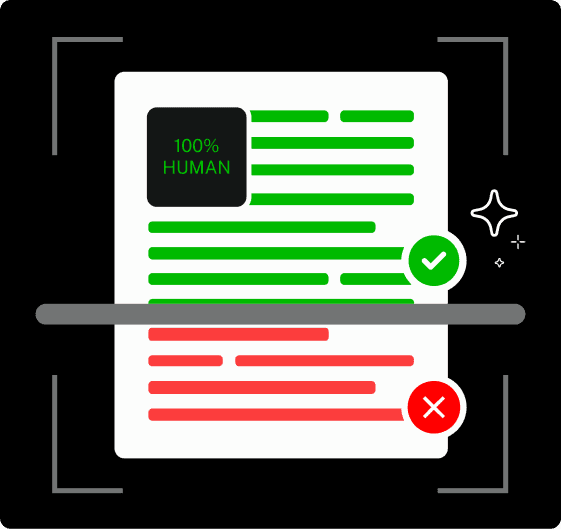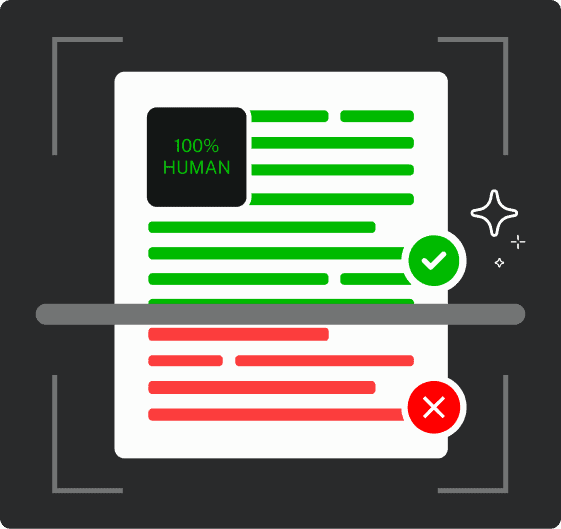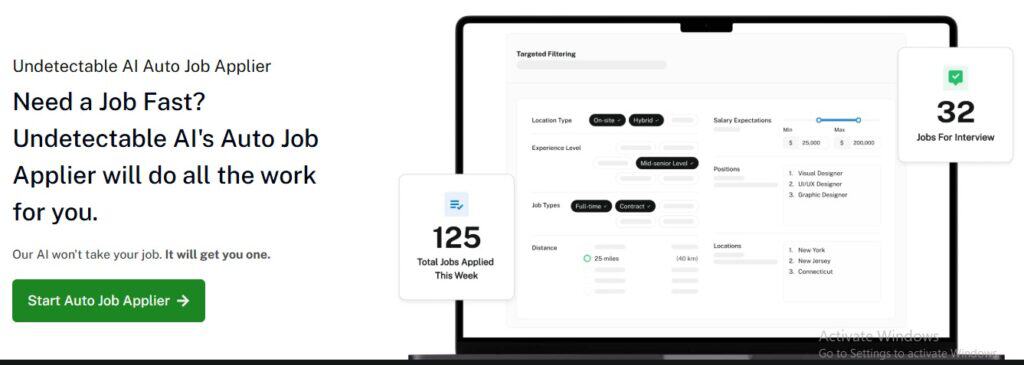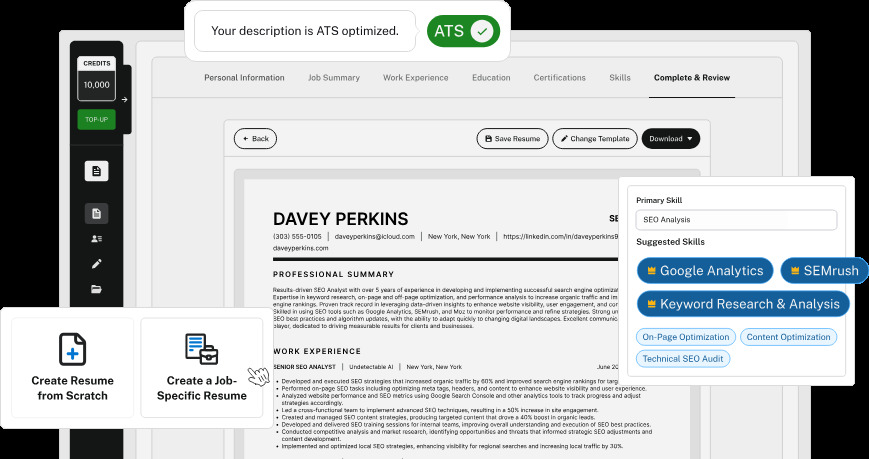The future of work is here to stay, and no, it is not the stringent 9-5 desk job that can only be done in an office.
Companies are unwilling to change and risk losing their best workers. Hybrid work is the future.
It is what many people and companies prefer, but what does it really mean, and why is there so much love for it?
We reveal everything there is to know about hybrid work in this post, how it is different from full remote or onsite work, and ways that companies practicing it use it today.
In addition, we give away the best practices and tools that make hybrid work successful. Let’s get into it.
What Is Hybrid Work?
At its core, the hybrid work model allows employees to split their time between remote work and physical visits to the office.
But what does hybrid work mean beyond just a mix of home and office work? It means allowing employees to work where they are the most productive while retaining company culture.
The modus operandi varies between organizations; some have set office days, while others have total flexibility.


Never Worry About AI Detecting Your Texts Again. Undetectable AI Can Help You:
- Make your AI assisted writing appear human-like.
- Bypass all major AI detection tools with just one click.
- Use AI safely and confidently in school and work.
How Hybrid Work Differs From Fully Remote & On-Site Work
Hybrid work sits right between two extremes.
In the first model of fully remote work, the employee works from home or any other place, while in the on-site model, the employee is required to be present in the office during office hours.
Each model has its own set of advantages and limitations, and hybrid work tries to extract the best of both.
- Flexibility vs. Structure: While fully remote work gives full flexibility, on-site work provides structure and allows collaboration. Hybrid work somewhat balances both, establishing an arrangement that allows one to work from home and, at the same time, show up for in-office meetings and collaboration where necessary.
- Work-Life Balance: Remote workers tend to have more personal time because they can save time by avoiding activities like commuting to work. Office work, on the other hand, is positively designed to keep personal lives from work activities. Hybrid work marries these benefits and provides work-life balance.
- Increased use of Technology for Collaboration & Productivity: Seeing as Hybrid workers are away from the office space on some days, the hybrid work system demands a heavy utilization of technology for communication, but beyond that, it fosters information retention when conversations had remotely, is reaffirmed in person on office days.
- Company Culture & Engagement: Firms are concerned about remote work corroding company culture. Hybrid work keeps employees engaged because they can come into the office occasionally to have in-person interactions yet keeps the benefits of remote work.
Why Hybrid Work Has Gained Popularity
Hybrid work became more mainstream precisely because employee expectations and business needs were evolving.
Remote work boomed after the pandemic, proving that most jobs can be done without a cubicle.
There was a net rise in productivity for companies, plus individual workers gained much more autonomy.
According to the results from a Gallup survey, about 40% of employees with remote-capable jobs moved from working fully on-site to a hybrid work setting or working fully remotely.
Employers agree on its benefits too—the hybrid work structure reduces risk and the costs of real estate and helps attract and maintain talent.
This new work structure has also endorsed advancements in remote collaboration tool production.
This is not just some new trend; it is a profound, long-term change in how businesses run.
How Does Hybrid Work Function?
The nature of hybrid work differs for various companies, but for the most part, it is based on what the business needs and the types of employees a company has.
The personalization of hybrid work per company has many asking the question, what is hybrid remote work in practice?
For a software development company, it could mean a setting where software developers are managed remotely, such that, by the end of the week, all developers, product managers, and the owners of the business come together in a physical meeting to discuss the progress of tasks and weekly objectives.
To successfully run a hybrid remote work system, companies need to operate a functional hybrid work schedule.
Your next logical question may be, what is a hybrid work schedule?
It is like a timetable of sorts that dictates the days that are for remote work and the days when staff members are required to come into the workplace.
Other important pieces of the functional hybrid work system are communication technology which is crucial for sharing information on days when staff members are out of the office, and managers who coordinate people and all processes.
Types of Hybrid Work Arrangements
There is quite a broad spectrum of hybrid work settings, depending on how permissive the organization is willing to be about employee flexibility.
For those thinking—what is a hybrid work setting? It is the particular way in which an organization structures its hybrid model, indicating when and where work happens, this is duly referred to as a hybrid work setting.
The four most widely adopted hybrid work settings are:
- Hybrid at-will: This hybrid work system is entirely dependent on the employee. They decide when to work from home or go to the office.
- Hybrid split-week: In this setting, companies set the balance between collaboration and flexibility, determining specific days for office work and remote work.
- Hybrid manager-scheduled: In this setting, managers call the shots, determining the days that employees come into the office. They do this based on the demands of the projects at hand.
Each hybrid work setting has its own advantages and disadvantages.
Ultimately, companies have to make the final decision on what works best for them—any setting that promotes work culture, productivity, and employee satisfaction.
Benefits of Hybrid Work
Hybrid work is both advantageous to employees and companies. It improves the productivity of the business and reduces the cost of operation.
Let’s break down the benefits for both parties.
Benefits for Employees
Hybrid work does the following:
- It gives workers the opportunity to design their schedules around personal and professional commitments, which reduces stress and enhances their well-being.
- It allows them to operate in the most productive environment for them, whether a quiet home office or a collaborative workspace.
- The reduced time in the office cuts down costs and commute time.
- More individualized work routines also allow flexibility to incorporate childcare, running essential errands, or attending health appointments when needed.
Job seekers can now choose from a wide pool of positions, as many companies now contain roles that are hybrid in nature.
Benefits for Companies
Hybrid work improves companies in the following ways:
- Workers require flexibility, and hybrid work offerings sustain the best talent in the company while decreasing employee turnover.
- With a lesser number of employees present every day, offices shrink, cutting down real estate and utility costs.
- Research gathered reveals that people working under hybrid models show better concentration and involvement, and are not inclined to feel as burnt out as their in-office counterparts.
- Employee diversity facilitated by hybrid work allows firms to hire from anywhere.
- Firms that operate the hybrid work model are technically and structurally primed to handle uncertain times, whether brought by economic change or any other unexpected events.
Simply put, hybrid work is a win-win for all parties involved.
Challenges of Hybrid Work & How to Overcome Them
Hybrid work clearly has its advantages, but it also has its cons.
These are the most coming ones:
Communication & Collaboration Gaps
With employees working in different locations, miscommunication is bound to happen.
This is a major problem of Hybrid work that businesses try to eradicate.
Unequal Opportunities & Visibility
Oftentimes, office employees are deemed to have better opportunities by hybrid workers because of their proximity to key staff members and interpersonal connections and relationships with them.
Maintaining Company Culture
It is harder to maintain a strong workplace culture with employees split between remote and office work.
Employees are less engaged with the organization without regular social contact.
Cybersecurity Risks
Hybrid work makes company systems more vulnerable to cyber-attacks and data breaches by enabling employees to access them remotely.
Difficulty Managing Work-Life Boundaries
Although hybrid work is flexible, some workers find it difficult to disconnect and become burnt out. Others are distracted while at home and may become less productive.
Best Practices for Hybrid Work Success
In a bid to achieve hybrid work’s full potential, companies must implement certain steps that promote efficiency, inclusion, and engagement.
Here’s how organizations can ensure hybrid work is a success:
Create Hybrid Work Policies
Set company expectations for office presence, work hours, and communication policies.
A formal hybrid work policy brings clarity and eliminates confusion among employees.
Prioritize Outcomes Over Hours
Instead of tracking hours behind the desk, firms can track output and worker performance.
Goal-based measurements guarantee that employees are motivated and are held accountable.
Invest in the Right Technology
Equipping employees with the necessary tools and software bridges the gap between remote and office work.
Secure video conferencing, cloud storage, and cloud-based project management tools boost efficiency.
Ensure Growth Opportunities Are Fair & Inclusive
Maintain parity between growth opportunities for remote team members and their in-office peers.
A few ways to mitigate biases include regular check-ins, virtual mentorship programs, and equal access to promotions.
Build a Cohesive Hybrid Culture
Hybrid teams feel motivated and tend to achieve more when anchored in the mission and each other.
Virtual social events, the celebration of team wins, and maintaining open communication will go a long way toward building a healthy workplace culture.
Tools & Technologies That Support Hybrid Work
Hybrid work depends squarely on the seamless utilization of technology tools. Here are some of such key tools:
- Video Conferencing Software: Some platforms like Zoom, Microsoft Teams, and Google Meet remote workers and office workers to hold meetings and discussions virtually.
- Project Management Tools: Tools like Nifty, Trello, Asana, and Monday.com can help to keep everything in proper order.
- Cloud-based collaboration tools: Google Workspace and Microsoft 365 enable employees to create documents and share them with others while saving information securely.
- Workplace Scheduling & Desk Booking: Hybrid workers use tools like Envoy and Robin to reserve a space and make the day they choose to work in-person align with when other colleagues are in the office too.
- Cybersecurity and VPN Solutions: Companies can use VPNs along with MFA and endpoint protection software to secure remote access, and prevent cyber attacks. For example, having cyber extortion protection can provide an added safeguard, helping organizations defend against blackmail attempts or the misuse of stolen data. For a straightforward option, teams can enable Veepn to create a private, encrypted tunnel during remote sessions.
By implementing these best practices and leveraging the right technology, businesses can build a thriving hybrid work environment that benefits both employees and the organization.
Hybrid Work vs. Remote Work vs. Office Work
Take a look at the table below for a quick comparison.
| Factor | Hybrid Work (Mix of Remote & Office) | Remote Work (Fully Remote) | Office Work (On-Site) |
| Flexibility | Moderate to high; employees split time between home and office | Maximum flexibility; employees work from anywhere | Low; employees must be in the office daily |
| Collaboration | Balanced; in-person meetings for teamwork, virtual tools for remote workers | Fully digital; relies on video calls, chat, and collaboration software | High; real-time collaboration and face-to-face meetings |
| Work-Life Balance | Strong; employees can adjust schedules to personal needs while maintaining office presence | Very strong; no commute, full control over time, but risk of overworking | Weak; long commutes and rigid schedules can affect balance. |
| Company Culture | Moderate; requires effort to keep both remote and office workers engaged | Weaker; harder to build team culture without in-person interaction | Strong; employees connect daily and build workplace relationships |
| Productivity | High; employees work in environments that suit them best | Varies; some thrive in remote settings, others struggle with distractions | High; structured environment minimizes distractions |
| Cost for Employees | Lower; fewer commuting days save money | Lowest; no commuting or office-related expenses | Highest; daily commuting and office expenses |
Many companies now recognize that hybrid work is the best compromise—offering the flexibility of remote work while maintaining the collaboration benefits of office work.
How to Get a Hybrid Job Faster
As the number of companies transitioning to hybrid work continues to rise, the rivalry for these positions is becoming more intense.
To distinguish yourself and land a hybrid job quickly, consider taking the following steps:
Make Your CV Fit for a Hybrid Positioning
Necessary qualifications include self-motivation, time management, and digital collaboration tool proficiencies, among others.
Spell out these skills. Make sure it is ATS compliant so as not to be stopped by an employer’s applicant tracking system.
Use AI Tools to Speed Up Job Applications
AI for businesses with a hybrid work model is a game changer. Potential employees can also use it to their advantage. Use AI to automate and increase the chances of landing a hybrid job.
Our Undetectable Smart Applier will help you create your resume, search for jobs, and submit your application automatically so you don’t miss out on any opportunity.

You can also use our Undetectable AI Resume Builder to create a resume that matches the job role you are applying for.
All you have to do is follow the prompt, input the necessary information and undetectable AI resume builder does the work for you.

Network & Apply Strategically
Join LinkedIn groups. Register for networking or other activities in your industry. Apply to positions from companies that mention they are hybrid flexible in their advertisements.
Prepare for Hybrid Work Interviews
Companies are seeking individuals who can be equally productive at home and in an office environment.
Be ready to be interviewed about how you stay productive at home and how efficiently you work in teams.
To ensure your responses sound polished and professional, don’t forget to explore our AI Detector and Humanizer in the widget below!
Conclusion
Hybrid work is the future. It has its challenges, but they are nothing that strategic planning, the right technology, and clear communication, cannot solve.
As businesses continue to adapt to the new order of work, it is important that you stay ahead of the pack.
For the easiest transition into hybrid work, use our AI-powered AI Job Application Bot and Resume Builder to expedite the process.
